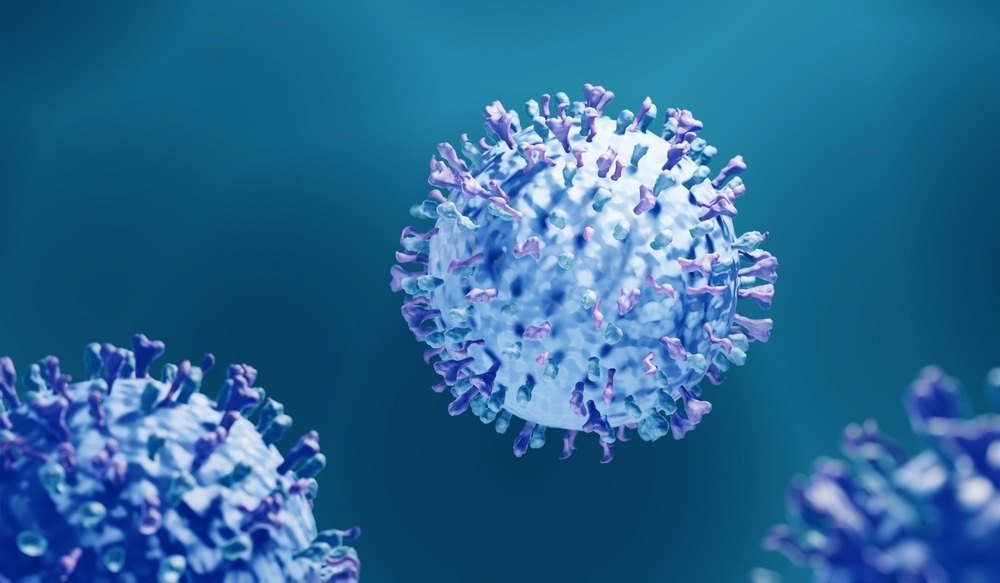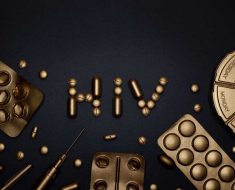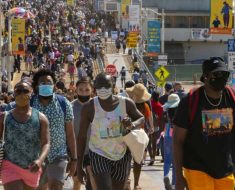In a recent study posted to the medRxiv* preprint server, researchers assessed respiratory syncytial virus (RSV) transmission after the coronavirus disease 2019 (COVID-19) pandemic in the Netherlands.

Background
Before the COVID-19 pandemic, the Netherlands experienced RSV epidemics annually during winter. After the adoption of COVID-19-associated non-pharmaceutical measures (NPIs), RSV was almost absent during the winter of 2020/21. After NPIs were relaxed, diverse patterns of RSV pandemic resurgence were found in several nations. Multiple studies demonstrate that the reopening of schools is linked with an increase in RSV activity.
However, little research has been performed to assess the effect of higher RSV susceptibility among children as well as adults as a result of low RSV exposure observed during the COVID-19 pandemic on resurgence patterns.
About the study
In the present study, researchers characterized the peculiar endemic pattern of RSV and the effect of waning immunity on the severity, timing, and duration of the re-emergence of the RSV pandemic.
The team launched a prospective, countrywide monitoring program in which data are gathered in real-time on hospitalizations of children due to RSV in 46 hospitals in the Netherlands. In 10 hospitals having RSV testing as a standard of care, clinical patient data were obtained between 3 May 2021 (week 18) and 4 September 2022 (week 35). Data segregated by age were collected between October 2018 and June 2022. All children aged between zero and two years hospitalized due to RSV-bronchiolitis at participating hospitals comprised the study population.
Potential variations in the patient age distribution during the pre-COVID-19, post-COVID-19 summer outbreak, and post-COVID-19 endemic periods were evaluated. RSV-positive admissions were manually selected from patient files by employing diagnosis treatment combination (DBC) codes such as 3210 for RSV-bronchiolitis, 3208 for lower respiratory tract infection, and 3104 for upper respiratory tract infection. The Mann-Whitney U test was employed to evaluate whether subgroup differences were statistically significant.
The team simulated RSV transmission between July 2018 and June 2025 to analyze the many parameters that influence the expected trajectories of RSV hospitalizations. Additionally, the estimated trajectories were qualitatively compared to the observed re-emergence of the RSV epidemic. The following four scenarios were analyzed: (1) moderate level of NPIs along with low virus importation levels, with no waning immunity; (2) moderate NPIs levels along with low virus importation levels and waning immunity; (3) moderate level of NPIs and high virus importation levels, with waning immunity; and (4) strict NPIs with high virus importation levels and waning immunity.
Results
Beginning on 24 May 2021 (week 21), an RSV summer outbreak was reported. During the highest week of RSV-bronchiolitis admissions (19 July, week 29), 240 individuals were admitted. Subsequently, continued RSV transmission was found, with weekly RSV-related admissions settling at 50 patients. Furthermore, the team noted that during winters before COVID-19, the number of patients aged less than six months was higher.
During the pre-COVID-19 winter seasons of 2018/2019 and 2019/2020, the median age was 69 days. During the summer epidemic, the median age rose to 161 days. During the endemic period between September 2021 and August 2022, the median age reduced to 137 days, although it remained higher than that noted during pre-COVID-19 winters.
A model that predicted moderate NPIs with low virus importation and diminishing population immunity against RSV due to low RSV circulation most closely approximated the Dutch situation, which had a major summer epidemic followed by persistent RSV transmission. In this case, the number of RSV hospitalizations among children over a year was anticipated to be greater during the summer epidemic than during the winter. During the subsequent endemic period, this fraction gradually declined.
Alternative cases that assumed RSV immunity would not wane failed to produce a summer outbreak in 2021 that was more severe than prior winter epidemics. RSV activity in France and Germany followed a model that anticipated strict NPIs, a high virus importation level, and decreasing immunity following a prolonged duration of low viral exposure.
Conclusion
The study findings demonstrated a different pattern of persistent RSV transmission in the Netherlands after an out-of-season RSV outbreak and the relaxation of COVID-19-related NPIs. Unlike adjacent nations, this pattern may be partially explained by "immunity debt," diminishing population immunity following a lengthy period of low RSV exposure. The researchers believe that constant assessment of RSV seasonality utilizing hospital-based data is essential in predicting future RSV epidemics.
*Important notice
medRxiv publishes preliminary scientific reports that are not peer-reviewed and, therefore, should not be regarded as conclusive, guide clinical practice/health-related behavior, or treated as established information.
- Löwensteyn, Y. et al. (2022) "Year-round RSV Transmission in the Netherlands Following the COVID-19 Pandemic – A Prospective Nationwide Observational and Modeling Study". medRxiv. doi: 10.1101/2022.11.10.22282132. https://www.medrxiv.org/content/10.1101/2022.11.10.22282132v1
Posted in: Medical Science News | Medical Research News | Disease/Infection News
Tags: Bronchiolitis, Children, Coronavirus, Coronavirus Disease COVID-19, covid-19, Hospital, immunity, Pandemic, Research, Respiratory, Respiratory Syncytial Virus, Virus

Written by
Bhavana Kunkalikar
Bhavana Kunkalikar is a medical writer based in Goa, India. Her academic background is in Pharmaceutical sciences and she holds a Bachelor's degree in Pharmacy. Her educational background allowed her to foster an interest in anatomical and physiological sciences. Her college project work based on ‘The manifestations and causes of sickle cell anemia’ formed the stepping stone to a life-long fascination with human pathophysiology.
Source: Read Full Article





